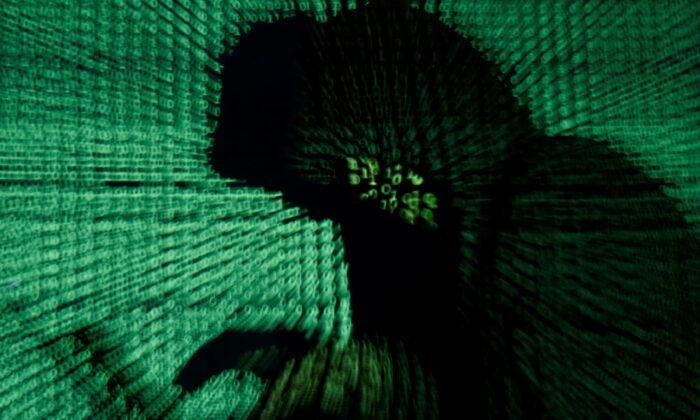An investigation is underway after the British Army’s social media accounts were briefly hijacked on Sunday.
The army’s YouTube channel was renamed “Ark Invest”—a global investment management firm—and featured a number a videos on cyptocurrency with images of billionaire entrepreneur Elon Musk.
The Epoch Times has contacted Ark Invest for comment.
Its Twitter account was briefly renamed Bapesclan, with a clownish profile photo that appears to be a cartoon ape figure donning an outfit inspired by the main character in the 2019 “Joker” film.

The account made several posts about non-fungible tokens—a distinct cryptographic token that cannot be replicated, which acts as a certificate of ownership for virtual items—before being restored to normal.
The Ministry of Defense (MoD) said it was aware of a breach of the accounts in a Twitter post at 7:10 p.m.
Two hours later, the British Army apologised on Twitter for “the temporary interruption” and said that “normal service will now resume.”
“We will conduct a full investigation and learn from this incident,” the message reads.
The MoD later confirmed that the breach had been resolved and an investigation is underway.
“The Army takes information security extremely seriously and until their investigation is complete it would be inappropriate to comment further,” the MoD said on Twitter.
Tobias Ellwood, the Conservative MP for Bournemouth East and chair of the House of Commons Defence Select Committee, said the incident looked “serious.”
“I hope the results of the investigation and actions taken will be shared appropriately,” Ellwood said on Twitter.
Cybersecurity has become a pervasive issue as the world becomes more interconnected.
Earlier this year, cybersecurity agencies from the United States, United Kingdom, Australia, New Zealand, and Canada said hackers were targeting public and private sectors and warned organisations to implement mitigation strategies.
The Five Eyes state agencies recommended regular updates of software, implementing a centralised patching system, implementing multi-factor authentication, ensuring remote employees had strong passwords, protecting controls and architecture, and encrypting network traffic.
However, the cost of monitoring and protecting against cyber threats has also ballooned.





